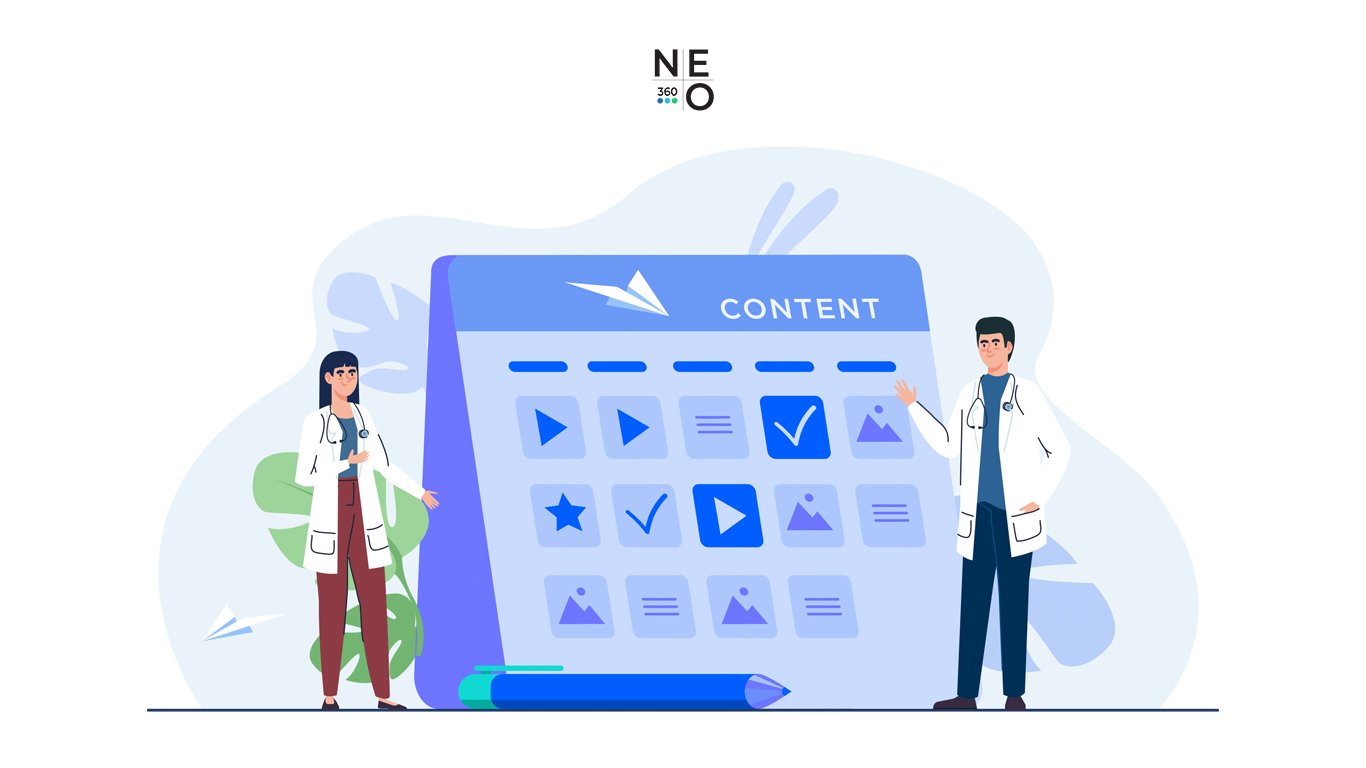How to create a social media plan for your medical practice

Maintaining a social media presence isn’t just a nice-to-have, but is increasingly becoming a must-have for doctors and those who manage their clinics or medical practices. It can help you find more patients and help you demonstrate that you really care about your patients.
Ask any super successful influencer or YouTuber, though, and they’ll tell you about how maintaining that presence requires a full-time commitment—something that you’ve already made to your patients as a full-time medical practitioner.
An organic social media plan can be extremely helpful to you in maintaining your social media presence, particularly on multiple platforms. When we say “organic”, we mean the posts you publish for free, as opposed to paid social media ads (although some posts can be boosted or promoted for a fee and serve as an ad later on).
If you already have social media accounts and are struggling with posting regularly, this round of 360° Views will show you how to prepare a plan that will help save time and streamline this crucial aspect of your digital marketing.
Let’s go through the planning process step by step.
Step 1: Identify your audience.
Decide on who your audience is, or who you want to see and engage with your content. It’s a good idea to make a buyer persona for them so that you’ll have a better grasp of the kind of content they expect to see from you.
Step 2: Decide on your objectives.
Like any digital marketing activity, you’re going to want to set objectives for your social media posts, and to figure out what you want your audience to do after seeing your posts. Do you want them to visit your website, for instance, or to start regarding you as an authority in your field?
Step 3: Decide on the kind of content you’ll be publishing.
Knowing who you’re reaching out to, and what you’d like them to do, you can now choose the kinds of content you’ll be putting out there to reach your objectives. Will you be making videos or sharing photos, and if so, what kind? Will they be carefully art directed, or will they be impromptu or behind the scenes?
Step 4: Choose your platforms.
There are many social media platforms out there, and while it’s a good idea to create and maintain as many accounts as you can, you don’t need—nor is it practical—to be on all of them.
You’ll want to choose the platforms that your audience frequents, of course, as well as consider which platforms are ideal for sharing the kind of content you’d decided on during the previous step. If you’ve decided that you’ll be making videos, for instance, YouTube would be a natural choice. (Yes, YouTube counts as social media.)
We do recommend, however, that you focus on platforms that suit your unique needs and capabilities. Knowing that your audience is on TikTok, for example, doesn’t necessarily mean you need to be on TikTok if you really don’t see yourself as a TikToker.
Step 5: Decide on the frequency of your posts.
Next, you’ll want to decide on how often you’re going to post—HubSpot says the ideal frequency varies between platforms, but ultimately, it’s not about how often, but about how well you post.
Remember, quality trumps quantity every time, so consider sustainability over frequency. Can you really produce a high-production-value video, for instance, five times a week, every week?
Step 6: Fill in your social media calendar.
This is the “actual plan”, or what a digital marketing or social media agency will show you when they say they’ve prepared a plan for you. Many businesses use Google Sheets with calendars to map out which post goes out when and where, but you might try using this template from HubSpot.
Step 7: Create your content…
In preparing your plan, you may or may not get down to the actual process of creating the content for each post you’ve marked out on your calendar. Some businesses prefer to include exactly what they’re going to post in their plans.
If you’d like to leave the content creation process for later, it’s enough for this step to indicate the kind of content or content format (e.g. single image, video, poll).
Step 8: …or curate it.
You can also pick out content from other sources you’d like to share on your account—which is basically what content curation is all about—and then indicate when and where you’ll be sharing it on your calendar.
HubSpot says your audience also wants to see content from other sources on your account if it’s relevant and helpful, and will thank you for guiding them towards it. They don’t want your brand or your practice to be all “me, me, me”.
But in curating your content, make sure you don’t lead your audience to a competitor’s content, or anything that won’t contribute to building your brand.You’ll also want to mix things up, or make sure you have a variety of posts scheduled at intervals—your plan, for example, might look something like this:
Week 1: Image
Week 2: Video
Week 3: Curated Content
Week 4: Poll
Before we move on to the next step, here are some questions you’ll want to consider when curating and creating content for your accounts:
- Will your audience find the post interesting, entertaining, useful, helpful, relevant?
- Will they want to like, comment or share this post with others?
- Is your photo/media the correct size for your platforms?
- Does your post make the most of your platform's features?
- Does your post reflect your brand image?
- Does your post align with your overall marketing strategy?
- Do your posts offer enough variety within a single month/planning period?
- Will your posts look good on mobile as well as desktop?
Step 9: Double-check your entire calendar.
Before implementing your social media plan or calendar, you’ll want to give it a once-over to see that you have content planned out for all the dates you want to post on and that you have a good mix.
If your plan includes the actual content to be posted, be sure to proofread everything and make sure of things like character count and ideal image sizes which vary between platforms.
Step 10: Consider scheduling your posts.
If your plan does include the actual content to be posted, you can save time and energy by scheduling your posts to auto-publish rather than posting every time a post falls due on your calendar.
Some platforms like Facebook and Twitter have their own schedulers, but it can be really handy to schedule all your posts across platforms using a single scheduling tool like those offered by HubSpot.
Take two more steps beyond.
Finally (though this is a couple of steps beyond preparing your social media plan), you’ll want to monitor your posts. This is a particularly good idea if you’ve scheduled your posts so you can make sure they come out when they’re supposed to, as some schedulers, for instance, have a habit of disconnecting from certain platforms.
And if, in monitoring your posts, you see that people have commented or asked questions, you’ll want to engage with your audience by thanking them for their comments, giving them answers, or managing any negative reactions.
Of course, having a plan doesn’t mean you can’t post anything that isn’t in it. Spontaneous or live posts, when done well and when appropriate, are always a good idea because of their authenticity and timeliness.
All the same, it’s easy to see how preparing a social media plan every so often (a month is standard) can be a lot more efficient than whipping up a post on the spot every week. As efficient and helpful as a social media plan is, however, it’s also easy to see how much work still goes into preparing one, as well as the content that goes along with it.
Social media planning and content creation are among the many social media-related services we provide for our medical and other clients. Having your social media plans drawn up by a 360 digital marketing agency gives you the advantage of making sure your organic social media supports—and is supported by—all your other digital marketing activities.
About the Author
Managing Director
A Mechanical Engineer by training who graduated from the Nanyang Technological University. With over 15 years of experience working in Start-Ups, SMEs and MNCs, he has driven sales revenue and leads across the Asia Pacific region. Shei Wah was one of the SEO Speakers at the first Search Engine Strategies Conference 2011 held in Singapore. As Managing Director, he aims to establish NEO360 in all of the world’s major cities. Even as he works toward this goal, Shei Wah also dreams of his children’s future happiness, and unwinds by doing calisthenics with his former school buddies three times a week.




